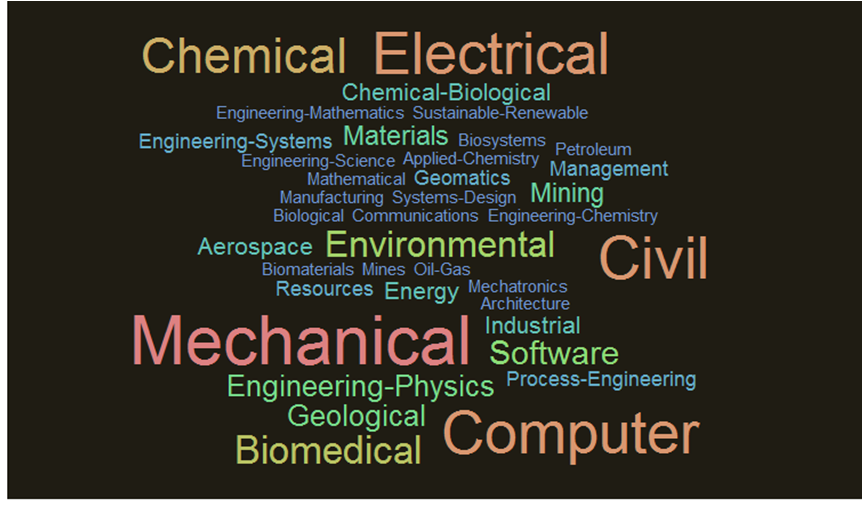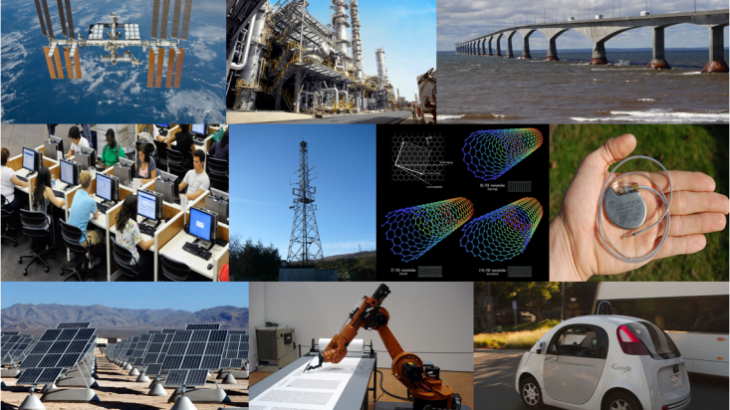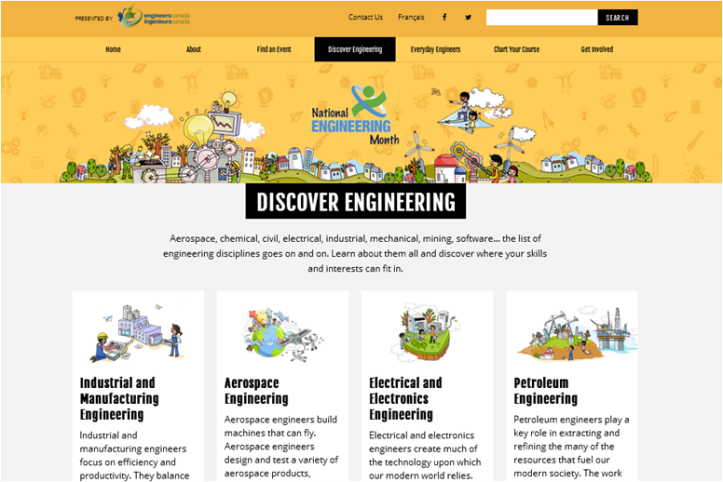Sri Ray-Chauduri, Technology & Engineering co-editor
Did you know that for the past 24 years, March has marked National Engineering Month (NEM) in Canada? Organized by Engineers Canada, a national organization of the provincial and territorial associations that regulates engineering practice, NEM celebrates engineering by sharing the significant and rewarding nature of engineering careers.
Defining engineering is not a straightforward exercise. For example, trying to imagine what engineering meant to ancient humans will likely conjure images of starting fires, creating tools to forage and hunt, building simple shelters, and making containers to hold water. By comparison, what do you imagine when you think of engineering in the 21st century? A much longer and more expansive list probably comes to mind – one that varies from person to person depending on experiences and background. You might picture anything from the international space station to chemical refineries, computers and wireless technology to bridges and dams, medical devices and regenerative medicine to advanced materials and solar panels, robots to driverless cars….and that’s only the tip of the iceberg.
The classification of engineering disciplines has changed over time to match the evolution of the field. Although there is no official number of engineering disciplines, the NEM website offers a snapshot of 14 on its Discover Engineering page, where core subjects such as chemical, civil, electrical, and mechanical engineering are summarized alongside more modern fields such as aerospace, biomedical, and computer engineering.
For those who want to see engineering in terms of what can be achieved, NEM’s Chart Your Course page is designed to identify possible engineering disciplines that may align with their passions. Statements such as “Improve How Machines Work”, “Discover Ways to Reduce Pollution”, “Create Life-Saving Drugs” and “Invent Really Small Computers” are among 70 different expressions a user can choose from to find out which disciplines relate to their interests.
These statements showcase a different aspect of engineering, one that emphasizes the interdisciplinary outcomes of engineering practice and research. You only need to look at the different departments and research clusters in engineering and applied science faculties across Canadian universities today to see the diversity of research that falls under the engineering umbrella.

A word cloud created using undergraduate engineering disciplines listed on Canadian university websites (Sri Ray-Chauduri)
This interdisciplinary assortment of research topics means that people with non-engineering backgrounds will often find themselves conducting engineering-based research or pursuing graduate level degrees in engineering. However, to achieve a professional engineering designation in Canada, provincial and territorial engineering associations still generally require that applicants possess accredited undergraduate engineering degrees.
One of the most famous visual emblems of an undergraduate engineering education is the Iron Ring (worn by many engineering graduates on the small finger of their working hand). Formally known as “The Ritual of the Calling of an Engineer”, it isn’t officially connected to any engineering organization or university in Canada, but is rather an obligation that…
“…[directs] the newly qualified engineer toward a consciousness of the profession and its social significance and…[indicates] to the more experienced engineer [his] responsibilities in welcoming and supporting the newer engineers…”.
The obligation and ceremony were authored by Rudyard Kipling at the request of Professor Herbert Haultain, who advocated for a way to bind the profession together during a 1922 engineering meeting in Montreal. Although the original iron rings were not created from the wreckage of the Quebec bridge disasters of 1907 and 1916, the history behind the collapse of the bridge has often been linked to the iron ring and the events serve as a reminder of the ring as a symbol of an “engineer’s obligation to live by a high standard of professional conduct”.

The Iron Ring presented during “The Ritual of the Calling of an Engineer” ceremony. (Image: PCStuff CC by 2.5)
Ultimately NEM, like many celebratory dates or noteworthy events, is an opportunity to consider the contributions and future of engineering and technology more closely.This year’s NEM includes over 500 events that shine a spotlight on engineering. The events, which include many for children and students, vary between the provinces and territories and range from artwork, bridge building, Rube Goldberg, robot and robotic competitions, to photo challenges, to Science Olympics, Science Games, and Mathletics, to industry and infrastructure tours among many more.
There is still time to participate in 2016 NEM events or, better yet, engineer your own way to celebrate!
* Composite header image created by Sri Ray-Chauduri using Creative Commons photos.






This event is quite intresting to me. thank you very much for your information. I am about to start my career in canada and it is very useful to know about this events.